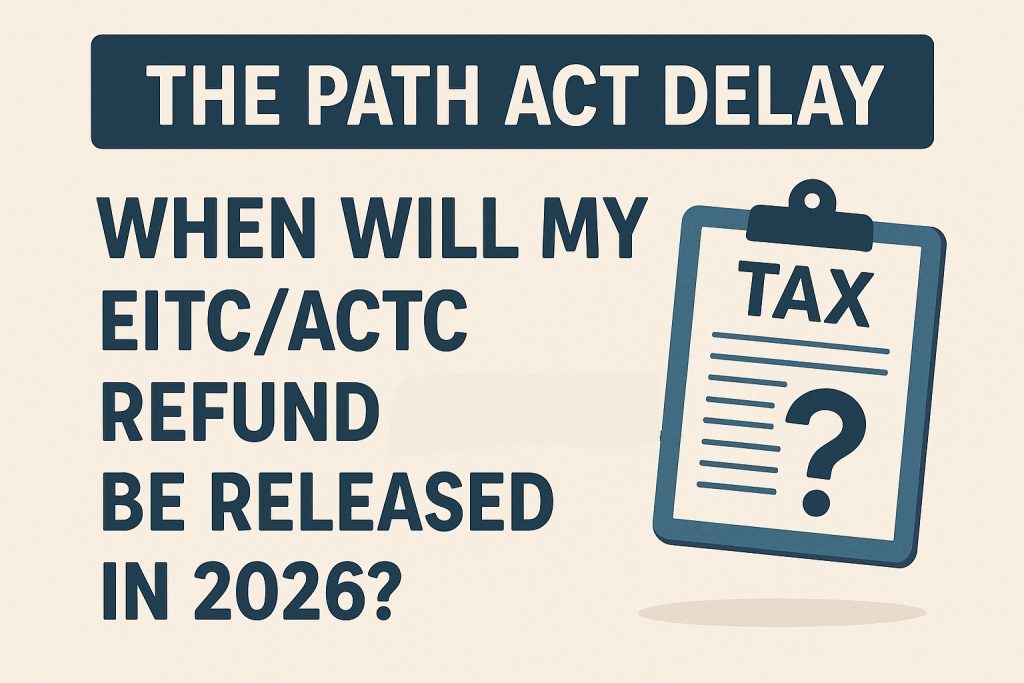Tax refund season is exciting, but if you claimed the Earned Income Tax Credit (EITC) or the Additional Child Tax Credit (ACTC) on your 2025 tax return, you might be wondering:When will my refund actually be released in 2026?
The short answer: Thanks to the PATH Act, millions of taxpayers will face a refund delay this year. But don’t worry—this delay is to protect you and the government from tax fraud. Here’s everything you need to know to understand the PATH Act delay and what to expect for your 2026 refund.

What Is the PATH Act?
ThePATH Act(Protecting Americans from Tax Hikes) is a law passed in 2015 to reduce fraudulent tax refunds, particularly those involving refundable credits like EITC and ACTC. Because these credits can result in refunds larger than the actual taxes paid, they’ve been a frequent target of refund fraud.
To prevent this, the PATH Act requires the IRS tohold refunds claiming EITC or ACTC until at least February 15 each year.
What Does This Mean for My Tax Refund in 2026?
If you file your return early and claim EITC or ACTC:
- Your refundcannot be issued before February 15, 2026.
- The IRS typically begins releasing these refunds in batches, startingaround the third week of February or early March.
- Depending on when you file, most taxpayers claiming these credits receive refunds bylate February through early March.
- The IRS updates the “Where’s My Refund?” tool with new refund dates after February 15.
Why the Delay?
The delay allows the IRS extra time to verify your information and detect fraud attempts before issuing large refundable credit refunds. Fraudsters often file early with false claims, so this hold helps protect your tax refund.
What If I File After February 15?
Good news! If you file your returnafter February 15, your refund will generally be processed withno added PATH Act delay. You should receive your refund roughly within the usual 21-day timeline after filing, assuming no other issues.
Will I Receive My Entire Refund at Once?
Yes, but be aware:
- Theentire refundis held, not just the amount related to EITC or ACTC.
- If you owe past-due debts (like child support or student loans), your refund may beoffsetby those amounts.
How Can I Track My Refund?
Start by checking the IRS“Where’s My Refund?”tool:
- Expect updates regarding the PATH Act hold after February 15.
- Once the hold lifts, the tool will show your estimated refund deposit date.
- Set reminders to check it daily—but remember it only updates once every 24 hours.
Tips to Prepare for the PATH Act Delay
- File early if you can’t wait—but plan for a refund delay.
- Choosedirect depositfor faster refund receipt once processing begins.
- Watch out for IRS letters requesting additional information, which can delay your refund further.
- Avoid multiple refund loans or advances with high fees while you wait.
Bottom Line
The PATH Act refund delay means if you claim EITC or ACTC on your 2025 tax return, you won’t see your refund before mid-February 2026, with most refunds arriving in late February or March. This delay is a trade-off to reduce fraudulent claims and protect taxpayers nationwide.
Stay informed, prepare for the wait, and monitor your refund status using official IRS tools. Your refund will come—it’s just on a slightly later schedule to protect you and the tax system.
